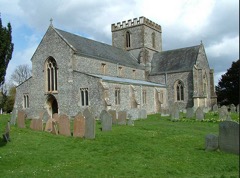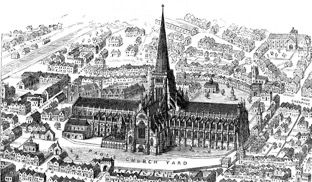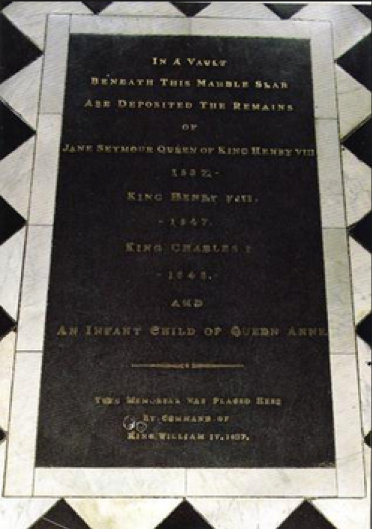
[1] Jane Seymour
JANE SEYMOUR- CATHOLIC MUSE OF ENGLISH FOLK SONG
By Brooke C. Little
Of all of Henry’s wives, Jane Seymour is the queen about whom is known the least, especially in terms of her education and childhood. She was one of ten children raised in a country estate southwest of London in Wiltshire, called Wulfhall. Her father, Sir John Seymour, was a member of the English nobility and fought alongside Henry in the Battle of the Spurs. Jane was Sir John and Lady Margery Seymour’s eldest daughter (although the fourth or fifth child). Her education was perhaps overseen by Lady Margaret and she may have also been taught by Sir John’s chaplain. James, as he is referred to in Wulfhall house account books, would have educated Jane in literacy and in spiritual knowledge. The Seymours, a great Catholic family, ensured that their children were raised properly in the faith. Being educated by a family chaplain, Jane would have become acquainted with the musical customs of the Catholic church, although she had no knowledge of Latin. It is also possible that Jane may have been tutored in reading and writing at a local nunnery in the company of all female peers from other noble houses.

[2] Church of St. Mary Parish Church in Great Bedwyn Wiltshire, England. Near the Seymour family seat at Wulfhall.

Engraving of Old St. Paul’s Cathedral- London
Musically speaking, Jane’s death and funeral processions differed greatly from the joyous Te Deums performed in honor of her pregnancy. Whether in life or in death, the musical customs of Jane’s reign remained strictly Catholic. All prayed for the soul of the queen and both the choir and priests sang a “dirige” or dirge. The next day Princess Mary led prayers, processions, and attended masses and internment ceremonies. These masses, corpse vigilance, and ceremonies continued in the chapel at Hampton court palace for the next eleven days. November 13th, 1537 after the final masses had been sung, the queen’s body was finally laid to rest. Through polyphonic Latin mass she brought life into the world, and with the fanfare of the mass she departed it.

The Family of Henry VIII at Hampton Court Palace- 16th cent. British School. Portrayed here is Henry VIII, his wife Jane Seymour, son Edward, daughters Mary and Elizabeth, and fools Jane, and Will Sommers.
After the birth of Edward, a large coalition of writers began composing works honoring the queen’s life and her contribution and sacrifice she made giving birth to the king of England. Several sixteenth-century contemporaries memorialized her life in verse and song. A ballad, printed in 1560 and attributed to John Sampson, is one such artistic contribution to English folk song memorializing the queen’s life. The work has been given multiple titles through the centuries, including The Wofull Death of Queen Jane, Jane Was A Neighbor, Queen Jeanie, The Doleful Death of Queen Jane and The Death of Queen Jane. While no musical score exists for the song, a selection of the words appear as follows:
Queen Jane was in travail, for six weeks or more, till the women grew tired,
And fain would give o’er, ‘O Women, O women’, Good Wyves if ye be
Go send for King Henrie and bring hime to me’
King Henry was sent for, He Came with all speed, In a gownd of green velvet
From heel to the head, ‘King Henrie, King Henrie, If kind Henri you be,
Send for a surgeon, And bring him to me.
The Surgeon was sent for, He came with all speed, In a gownd of black velvet
He gave her rich caudle, But death sleep slept she, Then her right side was opening,
Some where you comment on, Their description I seem to recall.
And the babe was set free, The Babe was christened, and put out and nursed,
While the royal Queen Jane, She lay cold in the dust.
These lyrics, possibly based off of a 1570 account of Queen Jane’s death, have been passed down through the centuries, in part by being incorporated into contemporary folk song. The text communicates a version of the events of the birth leading up to the queen’s death. However, the theme of these words conveys a human Henry, the basic story of man, woman, of love and of loss. While historically Jane may be remembered as the queen who gave Henry his long desired male heir, musically she was memorialized for her elaborate funeral procession, an audience member of the Catholic mass, and the queen with whom Henry chose to be buried at Windsor Castle.

The Great History Quiz- Tudor Edition BBC with Lucy Worsley
Begin at 36:16 for a listen to the Renaissance rendition of The Death of Queen Jane
https://www.youtube.com/watch?v=XkSq6tArP9o
NOTES
Alastair Vannan, “The Death of Queen Jane: Ballad, History and Propaganda,” Folk Music Journal 10, no. 3 (2013): 348.
Jane Flynn, “A Reconsideration of the Mulliner Book: Music Education in Sixteen Century England” (PhD diss., Duke University, 1993), 124.
David Loades, Jane Seymour: Henry VIII’s Favourite Wife (Gloucestershire, UK: Amberley Publishing: 2014), 25.
Pamela Gross “Jane, The Queene: The Uncrowned Unicorn, A Study of Queen Jane Seymour, Third Consort of Henry VIII” (PhD diss., University of New York at Buffalo, 1983), 10.
Edmund Stourton, “Ave Maria Ancilla Trinitatis” MS. 1, The Arundale Choirbook. Lambeth Palace Library, London. Ff 59v-63cf.
Merry Wiesner-Hanks, Women and Gender in Early Modern Europe (Cambridge: Cambridge University Press, 2008), 64-66.
[1] Portrait Jane Seymour, Queen of England by Hans Holbein, Kunsthishistoriches Museum, Vienna
[2] Church of St. Mary Parish Church in Great Bedwyn Wiltshire, England. Near the Seymour family seat at Wulfhall.
[3] Engraving of Old St. Paul’s Cathedral- London
[4] The Family of Henry VIII at Hampton Court Palace- 16th cent. British School. Portrayed here is Henry VIII, his wife Jane Seymour, son Edward, daughters Mary and Elizabeth, and fools Jane, and Will Sommers.
[5] Marker of Henry VIII and Jane Seymour’s tomb at St. George’s Chapel, Windsor Castle.
















Absolutely fascinating!